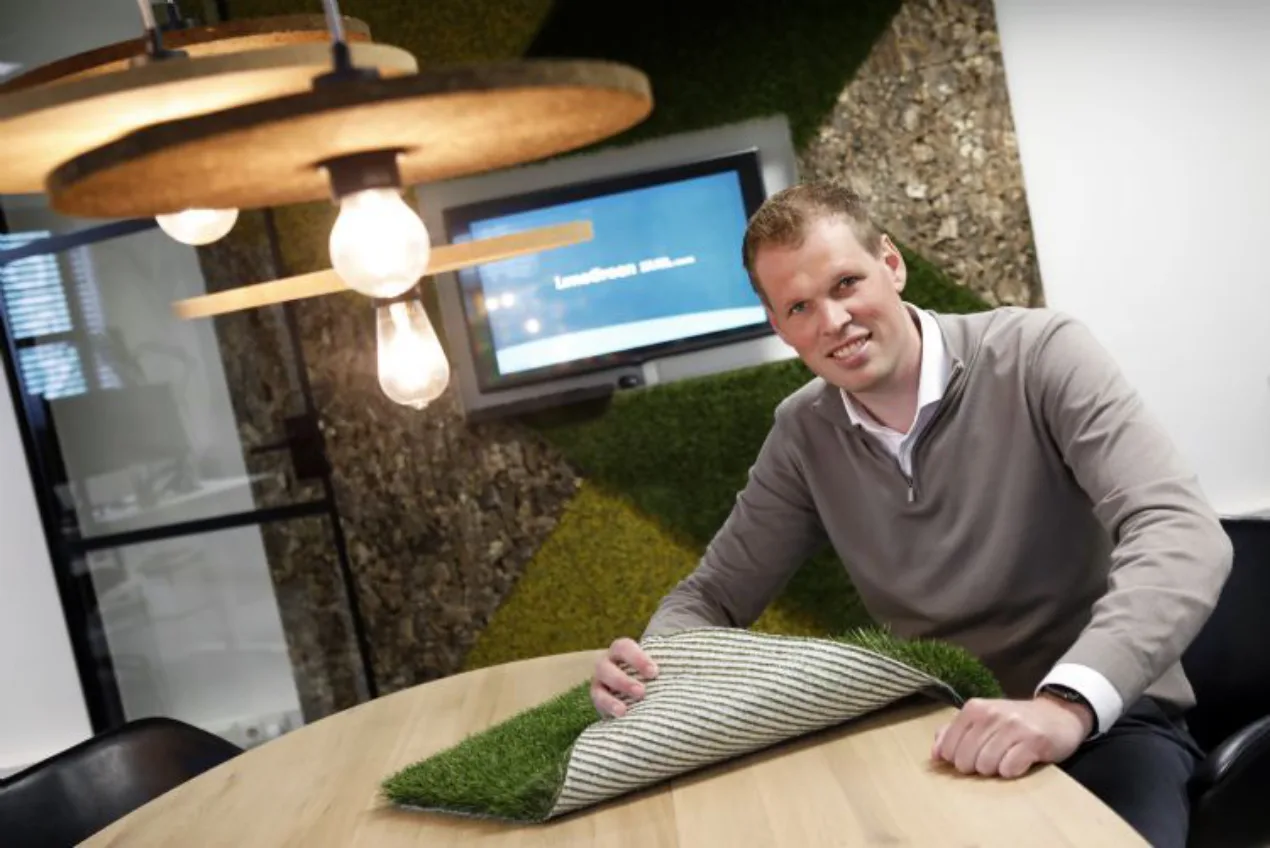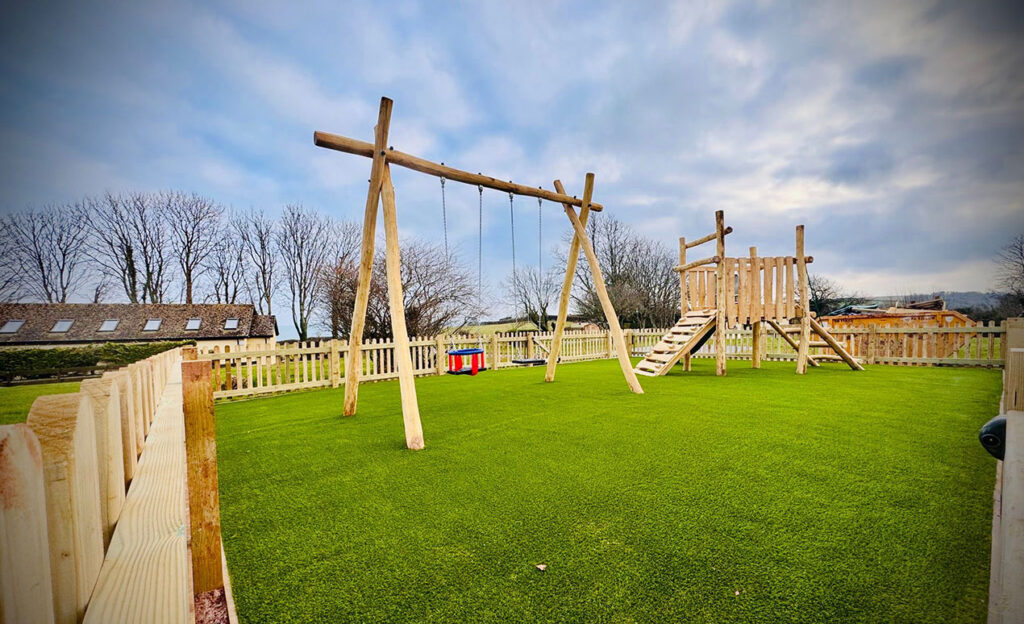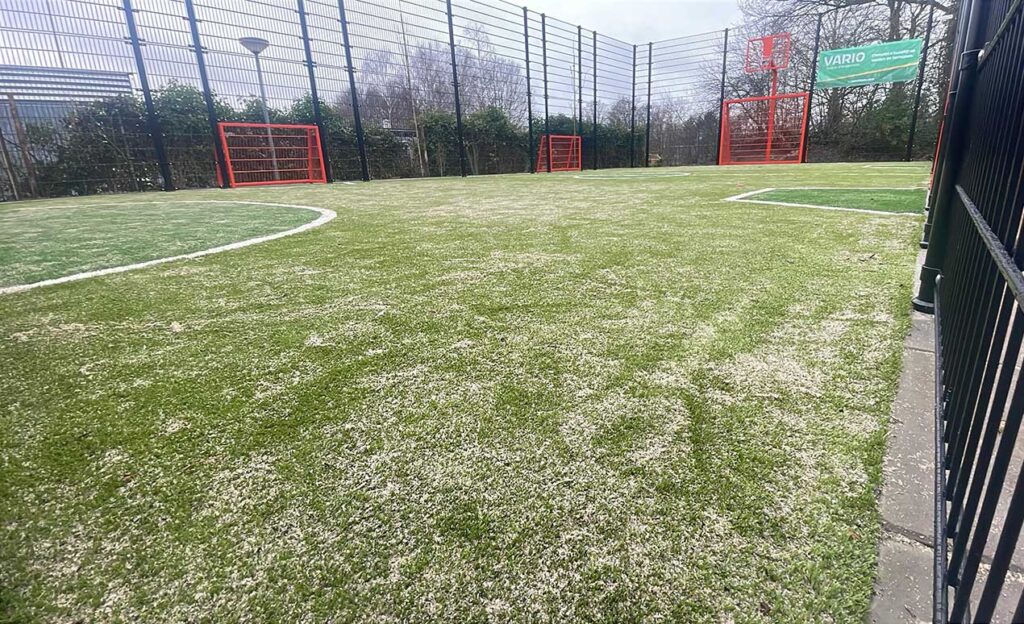When one thinks of artificial turf, they often first think of sports turf. However, the landscaping market has been experiencing strong growth in recent years. One company that has experienced this surge like no other is Vario Fields from Lichtenvoorde. The founder of this company, Jasper Eppingbroek, took on a new challenge in 2021. Through LimeGreen®, he is now partnering with TenCate and Condor to introduce a circular artificial grass mat based on ONE-DNA™ material.
New Development
The solution to this problem is as simple as it is technically complex. The editorial team of this trade magazine received at least five enthusiastic phone calls in the past ten years announcing that company X, Y, or Z had cracked the challenge of a 100% circular artificial grass mat. After those enthusiastic announcements, it would go eerily silent each time. With LimeGreen®, Jasper Eppingbroek has now taken the decisive next step. He has developed and brought to market an artificial grass product based on ONE-DNA™ material. Eppingbroek explains: “The industry has made progress, of course. There are now artificial grass mats made from two polymers. This is already a significant improvement compared to many traditional artificial grass mats that use latex or even polyurethane to attach the artificial grass fiber to the backing. This makes the product non-circular at the end of its life.
ONE-DNA™ Artificial Grass
LimeGreen® now introduces an artificial grass mat made entirely from ONE-DNA™ material. In our case, it is made of PE polyethylene. PE has long been a popular raw material for making artificial grass. We are now able to make the entire mat – including the backing – from this single polymer. No other material is used to secure the fiber in the backing. The big advantage of ONE-DNA™ is clear. At the end of its life, this mat can be reused for new PE products.”
Innovative
According to Eppingbroek, ONE-DNA™ has more benefits than just trouble-free reuse. In addition to requiring fewer raw materials, much less energy is needed for the production and processing of this material compared to traditional artificial grass. “Thanks to an innovative production process, we no longer need a coating to anchor the fibers in the backing, and the massive ovens to dry that coating are no longer necessary.
SGS Intron
SGS Intron recently conducted research on LimeGreen® products. Eppingbroek says, “The conclusion from SGS Intron is that our artificial grass can be fully reused – both the fiber and the backing – in new, high-quality applications. Moreover, SGS Intron qualifies LimeGreen artificial grass as 100% circular. All tested samples show normal workability when reprocessed into new PE products. The analysis also shows that the backing is extremely strong and highly resistant to wear.”
Closing the Loop
LimeGreen®recently entered into a trial program with a specialized recycling company aimed at locally collecting artificial grass remnants and end-of-life artificial grass. Jasper Eppingbroek explains: “Everything at our company is focused on preserving the value from remnants and waste. Our ONE-DNA™ product strategy is part of that value preservation for our entire artificial grass portfolio. Before we can enter into a long-term partnership, this waste processor is now providing free containers to our partners locally. This way, we can learn about the willingness to collect, especially from artificial grass processing companies we work with. The goal is that after this trial, it is clear that the processing of artificial grass can indeed be integrated into the existing process of upcycling other plastic products. For future reprocessing, this would yield raw materials with only one material DNA. Our ultimate goal is to achieve a fully circular chain approach with all our partners!”

































